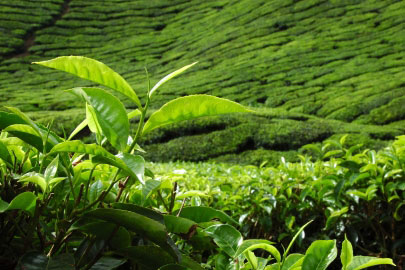
Green, black, and oolong tea are all derived from the leaves of the Camellia sinensis plant. Originally cultivated in East Asia, this plant grows as large as a shrub or tree. Today, Camellia sinensis grows throughout Asia and parts of the Middle East and Africa.
People in Asian countries more commonly consume green and oolong tea while black tea is most popular in the United States. Green tea is prepared from unfermented leaves, the leaves of oolong tea are partially fermented, and black tea is fully fermented. The more the leaves are fermented, the lower the polyphenol content and the higher the caffeine content. Green tea has the highest polyphenol content while black tea has roughly 2 - 3 times the caffeine content of green tea.
Constituents
Researchers think the health-giving properties of green tea are mostly due to polyphenols, chemicals with potent antioxidant properties. In fact, the antioxidant effects of polyphenols seem to be greater than vitamin C. The polyphenols in green tea also give it a somewhat bitter flavor.
Polyphenols contained in teas are classified as catechins. Green tea contains six primary catechin compounds: catechin, gallaogatechin, epicatechin, epigallocatechin, epicatechin gallate, and apigallocatechin gallate (also known as EGCG). EGCG is the most studied polyphenol component in green tea and the most active.
Green tea also contains alkaloids including caffeine, theobromine, and theophylline. They provide green tea's stimulant effects. L-theanine, an amino acid compound found in green tea, has been studied for its calming effects on the nervous system.
[Back]